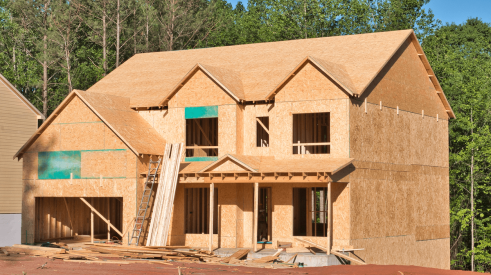The boom and then bust of nonprime mortgage lending in the United States caused enormous damage to individuals, communities, the national economy, and the global financial system. In a report released today, researchers at the Joint Center for Housing Studies of Harvard University conclude that the origination of excess risk in the primary mortgage market was inextricably linked to demand on the secondary capital markets for mortgages with higher yields than prime mortgages, as well as the multiplication and magnification of this risk through actions taken in the capital markets.
“The combination of a glut of global liquidity, low interest rates, high leverage, and regulatory laxity in the context of initially tight and then overvalued housing markets triggered staggering risk taking,” says Eric S. Belsky, managing director of the Joint Center and one of the study’s authors. “Capital markets supplied credit through Wall Street in large volumes for risky loans to risky borrowers and then multiplied these risks by issuing derivatives that exposed investors to risks in amounts much larger than the face amount of all the loans.”
Many other nations, the report points out, saw booms in home prices during the first half of the 2000s as mortgage interest rates globally fell sharply and stayed there for a time. In deciding how much to bid for a home, homebuyers tend to focus on monthly payments, and lower mortgage rates allowed them to chase prices higher in the context of housing markets that were tight—at least at first. Once house price appreciation took off, the report suggests, backward looking price expectations led both homebuyers and mortgage investors to count on rapidly rising prices, which further fuelled a bubble. But the riskier nature of the loans tolerated in the US, the sheer volume of them, the share of them made to speculators, and the way they were bundled into securities and written into credit default swaps caused much more damage to the US economy and global financial markets than did mortgage loans originated in these other nations.
The report finds that regulatory failures allowed the market to chase higher returns through excessive leverage and risk taking. Regulatory lapses included the failure to closely supervise nonbank financial intermediaries, prevent unprecedented layering of risk in mortgage underwriting, adequately supervise the credit ratings agencies, and impose stiff enough counterparty risk controls, such as insisting on greater transparency in the capital markets and requiring higher reserves against risks.
“One of the biggest problems,” states report co-author Nela Richardson, “is that the whole system created the illusion that risks were being adequately managed. This is because rating agencies assigned AAA-ratings to large portions of securities backed by subprime and Alt-A loan pools and synthetic derivatives based on them.” Many of the securities were also overcollateralized—issuing a smaller face amount of securities than the total face value of loans in the pools—to hold aside reserves against losses. In addition, monoline insurance could be purchased and credit default swaps entered into to further hedge against risk. Yet the fundamental underpinnings of the models used to rate these securities were deeply flawed and the capacity of third-party insurers and credit default swaps to make good on claims was inadequate.
As for the role of Fannie Mae and Freddie Mac in the crisis, the report finds that Alt-A loans contributed disproportionately to their losses and that AAA-rated securities backed by subprime mortgages they purchased may have helped support the market for these securities. However, the vast majority of nonprime mortgages that were securitized went through private conduits on Wall Street, not Fannie Mae and Freddie Mac. Investors others than Fannie Mae and Freddie Mac mostly bore the risk of defaults of these loans. In addition, the demand for exposure to the risk and returns on underlying nonprime mortgages was so great that credit default swaps and synthetic Collateralized Debt Obligations made up of these swaps were issued in amounts over and above the mortgages themselves.
The report also finds that while high price loans as reported under the Home Mortgage Disclosure Act were disproportionately concentrated in low-income, predominantly minority census tracts, the vast majority of high-priced loans were issued to homeowners outside these communities. It also finds that loans made by financial institutions regulated under the Community Reinvestment Act in areas where they were assessed for meeting the credit needs of low and moderate income communities constituted less than five percent of all high-price loans at the peak in 2005.
“Looking forward, it is encouraging that actions have been taken within the past two years intended to address many of the regulatory problems we found,” commented Belsky. “But many of the details are left for regulators to work out and how they do so will determine the balance achieved between consumer protection and management of systemic risk on the one hand and financial innovation, efficiencies, and consumer access on the other.” A central issue – the role of the federal government moving forward in backing mortgages through guarantees—has not yet been tackled and will matter to cost, availability, and access to mortgage credit in the years ahead. Yet, the report argues, the housing market would have struggled even more to recover absent federal guarantees of mortgages and mortgage-backed securities, and both the cost and availability of mortgage credit moving forward would be negatively affected by any curtailment in the scope of the guarantees. However, it notes the importance of government charging for these guarantees rather than allowing unfunded implicit guarantees of the kind Fannie Mae and Freddie Mac offered.
Harvard University’s Joint Center for Housing Studies is a leading center for information and research on housing in the United States. Established in 1959, the Joint Center is a collaborative unit affiliated with the Harvard Graduate School of Design and the Kennedy School of Government. The report Understanding the Boom and Bust in Nonprime Mortgage Lending is available at http://www.jchs.harvard.edu/publications/finance/UBB10-1.pdf.
Advertisement
Related Stories
Single-Family Homes
What Does It Cost to Build a Single-Family Home?
A closer look at the itemized costs in each stage of construction for a single-family home
Builders
A Look at the Boom in Home Builder Stocks During 2023
In 2023, stocks for the 10 biggest U.S. home builders outperformed the S&P 500. What does that say about the housing market?
Financials
Housing Demand Could Rebound in 2024 as Mortgage Rates Ease
The Mortgage Bankers Association predicts lower mortgage rates could bring homebuyers back into the market in 2024







